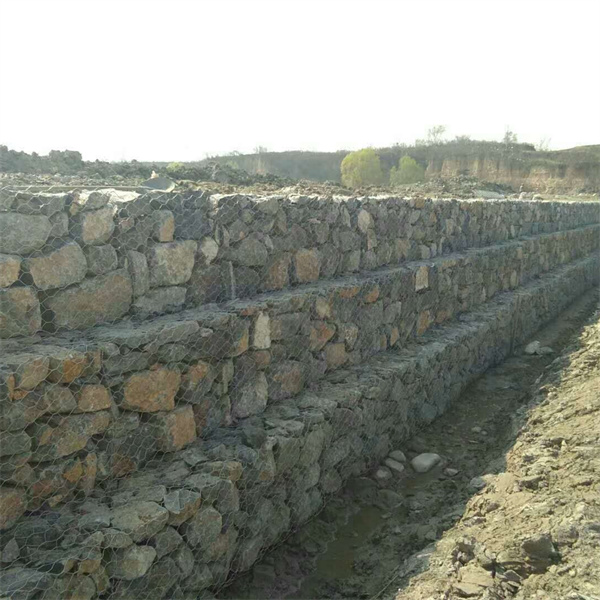Νοέ . 08, 2024 05:07 Back to list
Optimal Materials for Filling Gabion Baskets for Enhanced Stability and Aesthetics
The Best Filling Materials for Gabion Baskets
Gabion baskets have become a popular option in landscaping, erosion control, and civil engineering due to their versatility, durability, and aesthetic appeal. These wire mesh containers can be filled with various materials to suit specific project needs, enhancing both functionality and appearance. Choosing the best filling material is crucial, as it affects the effectiveness of the gabion structure and blends with the surrounding environment. In this article, we will explore some of the best filling materials for gabion baskets, considering their properties and benefits.
1. Natural Stone
One of the most common and effective filling materials for gabion baskets is natural stone. Available in various sizes, shapes, and colors, natural stone not only provides robust structural integrity but also helps maintain the visual appeal of the landscape. Rocks such as granite, limestone, and river stones can be used, often selected based on local availability and aesthetic preferences. The primary advantages of using natural stone include excellent drainage capabilities, resistance to weathering, and a natural look that integrates well with outdoor settings.
Crushed stone is another excellent option for filling gabion baskets. It is made by crushing larger rocks into smaller, angular pieces, which creates a tight interlocking structure, adding strength to the gabion. Crushed stone is often used in applications where stability is crucial, such as retaining walls, erosion control, and foundation supports. This material drains well, reducing the risk of water accumulation and subsequent damage. Along with its functional benefits, crushed stone can also serve aesthetic purposes, available in different colors and textures to match the landscape.
3. Recycled Materials
best filling gabion baskets

Using recycled materials for gabion baskets is an eco-friendly option that promotes sustainability. Materials such as recycled concrete, asphalt, or glass can be sources of filling. Recycled concrete, for instance, is often crushed down to create aggregate that can be used effectively within gabions. This not only reduces landfill waste but also provides a robust filling that supports the structural integrity of the baskets. Additionally, using recycled glass can enhance the visual appeal of the gabion, creating a striking aesthetic that glimmers in sunlight.
4. Sand and Gravel
For projects where drainage is a priority, sand and gravel make suitable filling materials. This combination allows for optimal water flow, preventing the accumulation of water that could undermine the stability of the structure. While sand provides a compact and stable filling, gravel ensures that there are spaces for water to flow freely. This blend can be particularly useful in riverbank stabilization projects, where managing water flow is critical. However, it is essential to ensure that the particle sizes are suitable so that the sand does not wash away during heavy rains.
5. Gabion Vegetation and Soil
In addition to traditional hard materials, some landscaping projects incorporate soil or vegetation as a filling material for gabion baskets. This approach often leads to green walls or living structures that integrate wildlife habitats while promoting a natural aesthetic. Plant roots can help stabilize soil and prevent erosion, making this a viable option for gardens or environmentally-sensitive areas. However, considerations must be made regarding the type of plants used, as they should be native species to ensure they thrive in the local climate and soil conditions.
Conclusion
Selecting the best filling material for gabion baskets depends on various factors, including the purpose of the structure, environmental conditions, and aesthetic considerations. Natural stone and crushed stone remain the most popular choices due to their durability and traditional appeal. Conversely, recycled materials, sand and gravel, and vegetation offer innovative, functional, and sustainable alternatives, enabling engineers and landscapers to tailor the gabion baskets to meet specific project needs. By carefully considering the filling options available, one can ensure that the gabion baskets are not only effective in their purpose but also enhance the surrounding environment.
-
The Role of Galvanized Gabion Mesh in Riverbank Protection
NewsJun.26,2025
-
The Role of Gabion Basket Raised Bed in Sustainable Gardening
NewsJun.26,2025
-
Quality Assurance of Wire Mesh Gabion Baskets
NewsJun.26,2025
-
Installation Guide for Welded Gabion Box
NewsJun.26,2025
-
How to Choose the Right Gabion Box
NewsJun.26,2025
-
Different Types of Gabion Wire Mesh
NewsJun.26,2025
-
Why PVC Coated Gabion Mattress Is the Best Solution for Long-Term Erosion Control
NewsMay.23,2025






